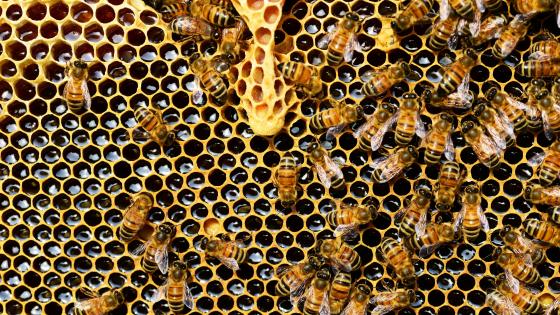
Beekeeping & Honey
Beekeeping & Honey
Apiculture, the study and maintenance of honey bees, often begins as a hobby, with beekeepers later expanding their interest into small businesses. A beekeeping enterprise can provide marketable honey and serve as a source of pollinators for cultivated crops. In Kentucky, common crops needing pollination include pumpkins, melons, orchard crops, berries, and canola.
Key Requirements
| Land | Low |
| Labor | Medium |
| Capital | Low to Medium |
Take the HortBizQuiz to see how much Land, Labor, and Capital you have for your operation.
Markets
- Direct to Consumer
- Farmer's Market
- On-Farm Stands
- CSA
- Restaurant
- Local Grocery
Pests & Disease
The most common brood diseases in Kentucky are chalk brood, American foulbrood, European foulbrood, and varroa-mite-vectored disease known as snotty brood. Other diseases include nosema and several viruses strongly correlated with the presence of varroa mites.
Costs and returns are presented as estimates. They will vary based on your farm and markets.
Costs and returns are presented as estimates. They will vary based on your farm and markets.
Challenges
- Hives need to be located near a pollen source.
- Need to have the right equipment and knowledgeable skills to ensure the health of the hive.
Opportunities
- Can be marketed in different forms which can allow for diversification of the product.
- The actual economic value of beekeeping is far greater than the value of the honey produced.
- Many consumers want to purchase local honey due to its “health affects” during allergy season.